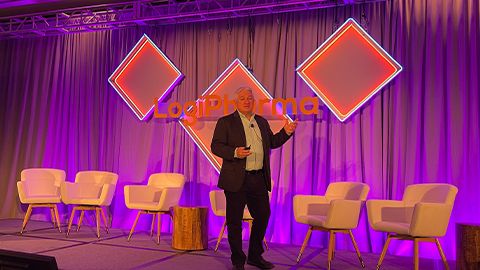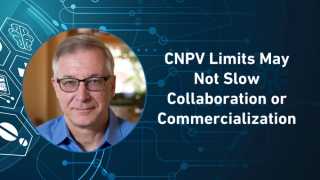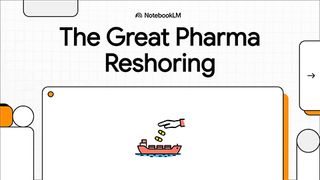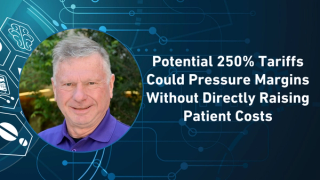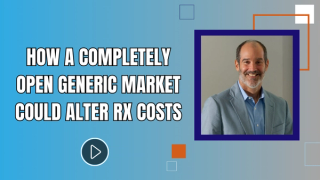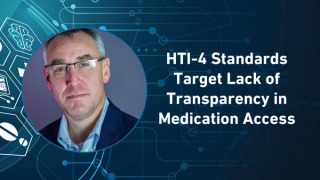
Opinion
Latest News

Latest Videos

Shorts

More News

Payer-level reporting should do more than track performance—it must guide strategy, focus resources, and drive measurable brand impact.

Why startups and life sciences companies should approach this booming sector with extreme caution.

Engaging the full workforce—from HR to R&D—can elevate launch outcomes, build trust, and create long-term brand ambassadors.

As drug development increasingly targets multiple indications, pharma companies must make strategic branding decisions—balancing regulatory requirements, market dynamics, and patient safety—to choose between single-brand or multi-brand approaches.

In order to succeed in today’s outcomes-driven healthcare landscape, pharmaceutical companies must move from traditional sales models to strategic, measurable partnerships with integrated delivery networks (IDNs).

Potential import taxes on pharma goods entering the United States continue to have effects on the industry in more ways than one.

Direct-to-consumer and direct-to-patient models are major contributors.

This serialization system represents a business imperative that yields significant competitive advantages.

In an exclusive sit-down with Pharma Commerce, Anne Cassity, senior vice president of government affairs for the National Community Pharmacists Association (NCPA), discusses pending legislation that could affect the impact of PBM pricing.

A Day 3 presentation dives into the impact of copay accumulators, maximizers, and AFPs on driving cost savings.

The session provides an overview of the uninsured population, and also tackles challenges faced by patients when it comes to accessing PAPs.

This link in the pharma supply chain is undergoing a major transformation propelled by technological advancements, regulatory changes, and evolving market dynamics, requiring industry leaders to adopt innovative strategies in order to remain competitive.
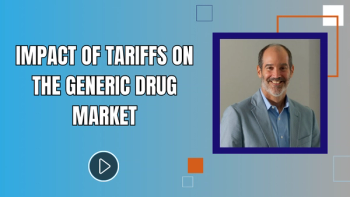
In the first part of his video interview with Pharma Commerce Editor Nicholas Saraceno, Geoffrey Joyce, PhD, director of health policy at the Leonard D. Schaeffer Center for Health Policy & Economics at USC, outlines how the tax on goods coming from China and potential 25% tariff on pharmaceuticals could influence generic drug prices.

In the first part of her video interview with Pharma Commerce Editor Nicholas Saraceno, Jenna Dale, director of client relations at Cencora, shares how the imposed/pending trade tariffs impact pharma manufacturers.

A report offers a comprehensive benchmarking and assessment of pharmaceutical manufacturer engagement with specialty pharmacies.

In the final part of his video interview with Pharma Commerce Editor Nicholas Saraceno, Ed Schoonveld value & access advisor for Schoonveld Advisory and author of The Price of Global Health, previews his upcoming February column.
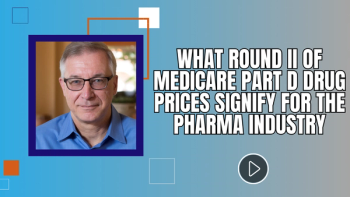
In the first part of his video interview with Pharma Commerce Editor Nicholas Saraceno, Ed Schoonveld, value & access advisor for Schoonveld Advisory and author of The Price of Global Health, comments on the future implications of the latest CMS drug price negotiations.

Despite challenges surrounding communication overload, drug shortages, and cybersecurity risks, this term is revolutionizing medication management and patient care through the use artificial intelligence and predictive forecasting.

A forum intended for HCPs, policy experts, and industry leaders addresses pressing obstacles facing this sector of the industry today.

How will supply chains in the space continue to develop?

Why well-organized documentation is critical at every stage of the process.

In the quest for achieving full traceability, the exemption applies to certain trading partners under the Act, and postpones enforcement of final compliance requirements while acknowledging progress and ongoing challenges.

Tips for pharmacies with the reimbursement blues.

The August issue of Pharmaceutical Commerce explores an area of the pharma business engine that can often fall under the radar: inventory management and optimization.

Ongoing education on the people and topics we cover is critical—with one recent webinar I attended a fitting example.


